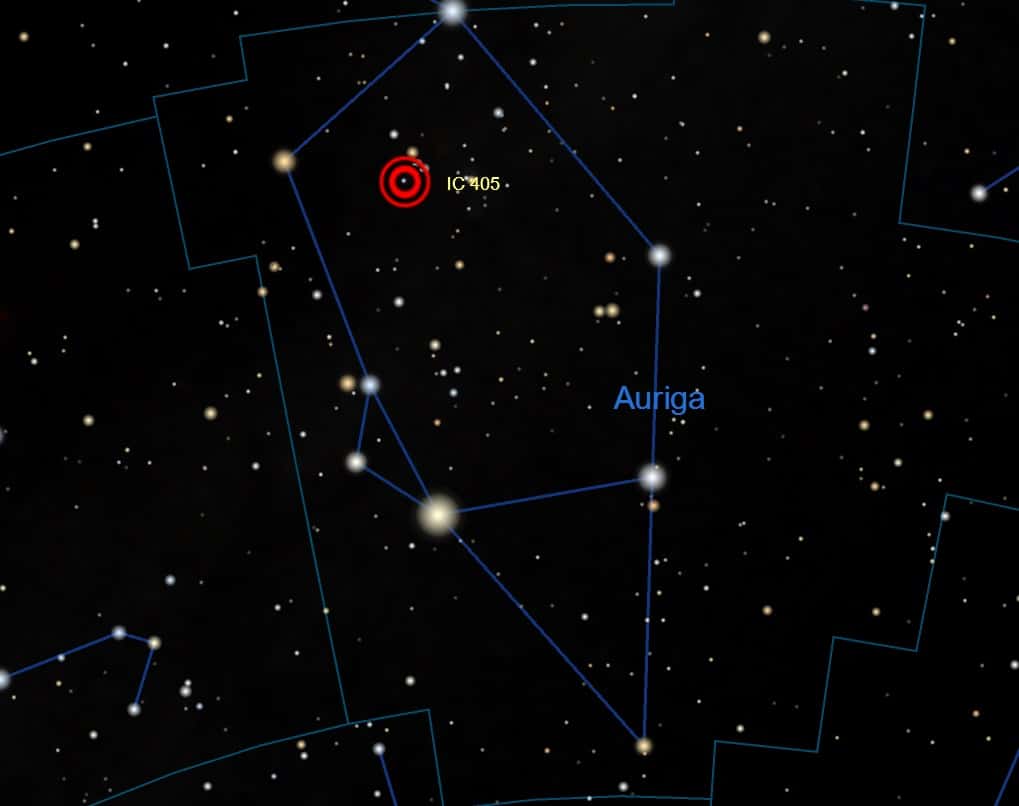Found close to 1,500 light-years away in the constellation of Auriga is the beautiful “Flaming Star Nebula.” Named for the waves or nebulous ripples that appear like flames in a fire, the image of this star (pictured above) shows glowing red clouds of hydrogen gas, intermingled with pale blue swaths of dust and illuminated by brilliant young stars.
Embedded in the spiral arms of the Milky Way galaxy, this nebula is enveloped in a sea of beautiful stars. The Flaming Star’s host constellation of Auriga — also known as the Charioteer or chariot driver in Greek mythology — is easy to find on a wintry night.
On the associated star map, you can readily see the star pattern’s five relatively bright stars in the shape of a pentagon. The Flaming Star Nebula is indicated by the Index Catalog (IC) 405 designation, the Flaming Star Nebula’s official astronomical catalog number. The Index Catalog is a logbook of more than 5,000 nebulas, which was first published in 1895.

Why Does the Flaming Star Nebula Appear Blue and Red?
Through the telescope, the Flaming Star Nebula exhibits reddish emission and bluish reflection nebulas. Astronomers have determined that emission nebulas are created when the light of hot nearby stars excite atoms, causing these gaseous clouds of hydrogen to glow red. This effect is what creates the “flames” of this majestic cloud of dusty gas. Where starlight is reflected off the dust clouds, you can see the bluish smoke-like appearance is in the form of a reflection nebula.
Taking a Photo of the Flaming Star Nebula To take this image, I used my favorite imaging telescope, the RASA 8 with its ZWO ASI294 camera, to take this photograph of the Flaming Star Nebula. The image is the product of a series of two-minute exposures taken over a period of two hours. Acquired from my east-central Georgia observatory on the night of January 16, 2021, the rural dark skies are ideal for capturing such an elusive celestial game.

Comments are closed.